African Mallow (Anisodontea capensis) is a versatile evergreen shrub belonging to the Malvaceae family. Native to the Cape Province of South Africa, this plant thrives in warm, Mediterranean climates. Its pink, hibiscus-like flowers, accented with dark red veins, bloom throughout the year in the right conditions, adding vibrant color to any garden.
Despite its common nickname “dwarf hibiscus,” African Mallow is not a true hibiscus but shares a similar appearance. This flowering shrub is a magnet for bees and butterflies, making it an excellent choice for gardeners looking to support pollinators while enhancing their landscape.
| Common name | African Mallow, Cape Mallow, Dwarf Pink Hibiscus, False Mallow |
| Botanical name | Anisodontea capensis |
| Family | Malvaceae |
| Species | capensis |
| Origin | Cape Province of South Africa |
| Life cycle | Annual |
| Plant type | Annual |
| Hardiness zone | 8, 9, 10, 11 |
| Sunlight | Full Sun |
| Maintenance | Low |
| Soil condition | High Organic Matter |
| Soil ph | Acid |
| Drainage | Well-Drained |
| Growth rate | Fast |
| Spacing | 12 in. – 3 ft. |
| Flowering period | Fall |
| Height | 2 ft. – 4 ft. |
| Flower color | Pink |
| Leaf color | Green |
| Stem color | Brown, Copper |
| Fruit type | Schizocarp |
| Flower benefit | Long Bloom Season |
| Garden style | Butterfly Garden |
| Uses | Coastal |
I. Appearance and Characteristics
Anisodontea capensis, known as African mallow, dwarf hibiscus, Cape mallow and false mallow, is a species in the tribe Malveae in the family Malvaceae that is native to the Cape Provinces of South Africa. It has gained the Royal Horticultural Society’s Award of Garden Merit as an ornamental.
It is an upright, dense subshrub that grows 1m to 1.5m tall and 90cm wide, and is found at altitudes of 670 to 2167 meters. It features green, hairy branches 2mm in length that age to brownish grey. Leaves are simple and ovate, palmately veined and three-lobed, 1mm in length. It has a woody base, so it is not a true herbaceous plant. During a cold spell, it may lose some of its leaves.
From late winter or early spring to the first frost, it would display fuchsia, mauve or pink flowers with red centres that are borne in clusters with 5 petals, 1mm in diameter, resembling a hibiscus.
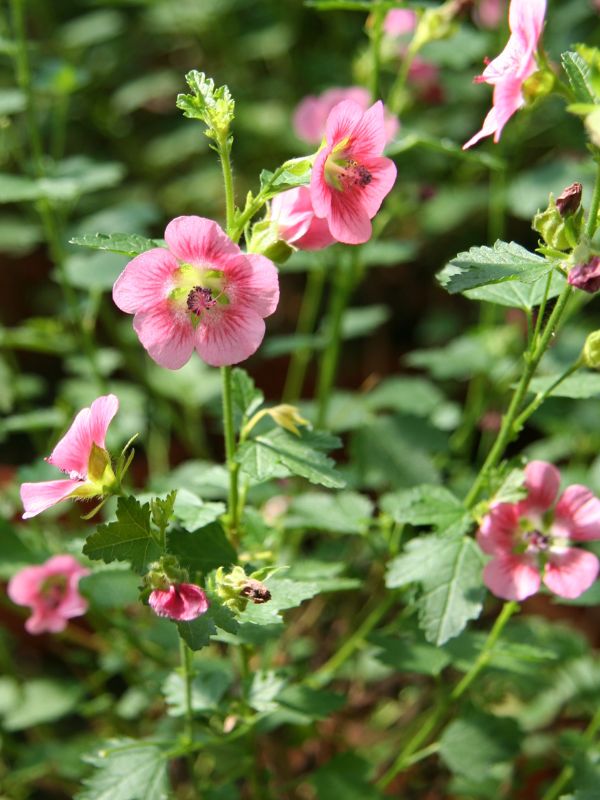
The plant does well in Mediterranean style gardens, in containers and as a hedge. They thrive in well-drained soils with organic matter and must be watered regularly during hot and dry spells. Some light pruning is encouraged to promote bushy and compact growth.
It can be propagated from tip cuttings done in the summer, and as well by seed (which should be sown on the surface). It can bloom all year long provided it is protected from frost.
II. How to Grow and Care
Sunlight
The best location for cape mallow is in full sun. While it will grow in partial shade, it does not bloom as prolifically when it receives less than 8 hours of bright sunlight daily. Morning sun is preferable. In hot climates, some afternoon shade is acceptable.
Temperature and Humidity
Cape mallow is a plant for warm climates. A light frost will cause its leaves to drop but it usually recovers in the spring. The plant is not winter-hardy below Zone 9.
Soil and Water
Cape mallow does not have any particular soil requirements but good drainage is key. In their native habitat, they grow in sandy soil. The pH should be between 6.0 and 8.0.
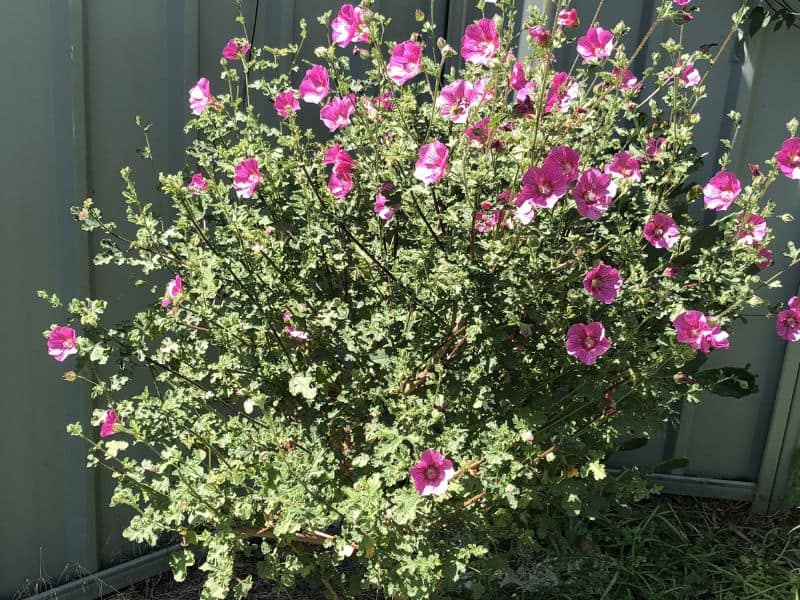
Water young plants regularly for 6 to 8 weeks after planting to encourage them to develop strong root systems. Reduce watering after the root systems are established. Although these plants are considered drought-tolerant, it helps to conserve soil moisture by spreading a 2-inch-thick layer of mulch around the base of each plant. If there is an extended dry period, water the plants slowly but deeply.
Unlike cape mallow in garden soil, container-grown plants need frequent and regular watering.
Fertilizing
Despite their profuse bloom, cape mallow usually does not need repeated fertilization. In the early spring, after the new growth has started, feed the plant with a granular slow-release balanced fertilizer. If the plant seems to languish during the growing season, apply a liquid balanced fertilizer, following product label instructions, to give it a quick nutrient boost.
Planting Instructions
Select a location in full sun. In terms of soil and pH, cape mallow is undemanding as long as the soil is well-drained and the soil pH ranges between slightly acidic to slightly alkaline.
Cape mallow thrives in garden soil but being a subshrub or dwarf shrub, it is also highly suitable for a container garden. Add it to a pollinator garden with native plants or a border to attract bees and butterflies. Because the plant is drought-tolerant, it makes a great landscape plant for dry climates.
For a potted patio tree, find a sheltered location away from strong winds.
Plant cape mallow in the spring. Dig a hole at least twice the size of the root ball and just as deep. Place the plant in the hole and backfill with the original soil so that the top of the root ball is flush with the soil. Tamp down the soil and water it well. Keep the soil moist and water it regularly during the first growing season to encourage a strong root system.
Space plants 3 to 4 feet apart.
Support a patio tree with a stake that has a diameter at least as large as that of the stem. Fasten the trunk to the stake at several points with garden twine or green plastic tie tape. Check the ties periodically and loosen them as needed to accommodate growth.
Pruning

In the spring, remove any damaged or dead branches. As the plant starts to grow, pinch back some of the new growth to encourage a bushier growth habit and heavier bloom. However, this needs to be done carefully to avoid accidentally snipping off slower buds (cape mallow blooms on new growth).
Once it starts blooming, no deadheading is required because the spent flowers drop on their own. Cape mallow is a self-cleaning plant.
A single-stem patio tree requires regular pruning to maintain the rounded, bushy top growth. Snip away wayward stems and long growth to maintain the desired size and shape. Do not shear the plant, which often prevents the formation of flower buds.
Propagation
Many cape mallows sold at nurseries are hybrid cultivars that would require vegetative propagation such as division or stem cuttings to produce plants that are true to the parent. However, the cultivars sold in the nursery trade are usually protected by a plant patent and thus it is prohibited to propagate them. If that does not apply to your plant, you can propagate it by stem cuttings. In the spring or early summer, take a 4- to 6-inch cutting and remove the bottom leaves.
Dip the cut end of the cutting in the rooting hormone. Fill a 4-inch pot with a damp potting mix and insert the cutting in the mix. Cover it with a plastic dome or a perforated plastic bag and place it in a bright location but out of direct sunlight. Keep the soil evenly moist at all times. Once the cutting has rooted, remove the plastic cover and continue to let the cutting grow into a healthy little plant before transplanting it into the landscape.
Potting and Repotting
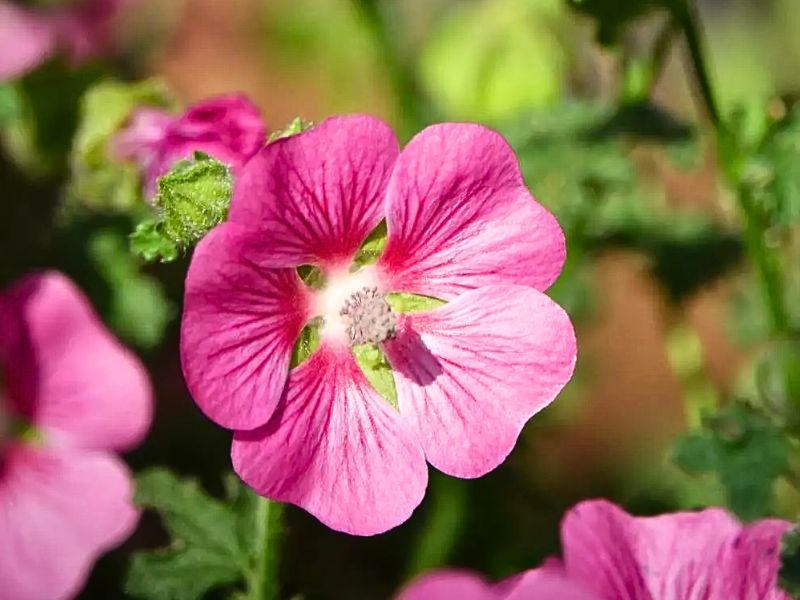
Small varieties of cape mallow are very well suited for container planting. Choose a pot at least 5 inches wider in diameter than the nursery pot and make sure it has large drainage holes. A container made of a heavy material (glazed ceramic or terra-cotta) is best as it does not topple over easily. Fill the container with a well-draining potting mix. Keep in mind that container plants need more frequent watering and fertilizer than inground plants.
When grown as an annual, cape mallow won’t require repotting during its single growing season. Otherwise, repotting to a larger container with fresh potting mix will be required when the roots outgrow the pot.
Pests and Diseases
Cape mallow is rarely affected by serious pests or diseases. The plant may attract aphids, spider mites, whiteflies, and Japanese beetles. As a member of the hollyhock family, the plant is susceptible to Puccinia malvacearum, also known as hollyhock or mallow rust, which is a fungal disease spread by windborne spores or transplants infected with the fungus.
III. Types of Cape Mallow
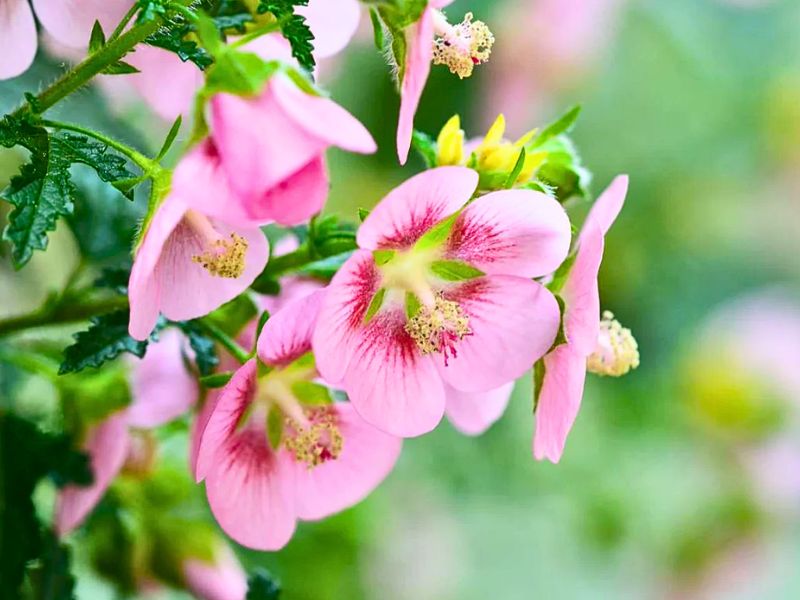
- ‘Elegant Lady’
This hybrid cultivar with magenta flowers grows 5 to 6 feet tall and 4-5 feet wide. The leaves are dark green and aromatic.
- ‘Slightly Strawberry’
The flowers on this cultivar of Anisodontea capensis are pink with deep red veins. With 2 to 3 feet in height and width, this is a short, compact variety of cape mallow.
- ‘Very Cranberry’
This cultivar stands out in two ways: with magenta-cranberry-colored flowers and unusually dark green foliage. The plant reaches 4 to 6 feet in height.
- ‘Tara’s Pink’
Unlike other cape mallow hybrids that were bred, this variety is the result of a spontaneous seedling hybrid, assumed to be Anisodontea x hypomandarum. It has pink flowers with a darker red-pink center and a larger, more lush foliage than other varieties. It grows up 6 feet tall and 4 wide.
Find Where to Buy the Best African Mallow (Anisodontea capensis)



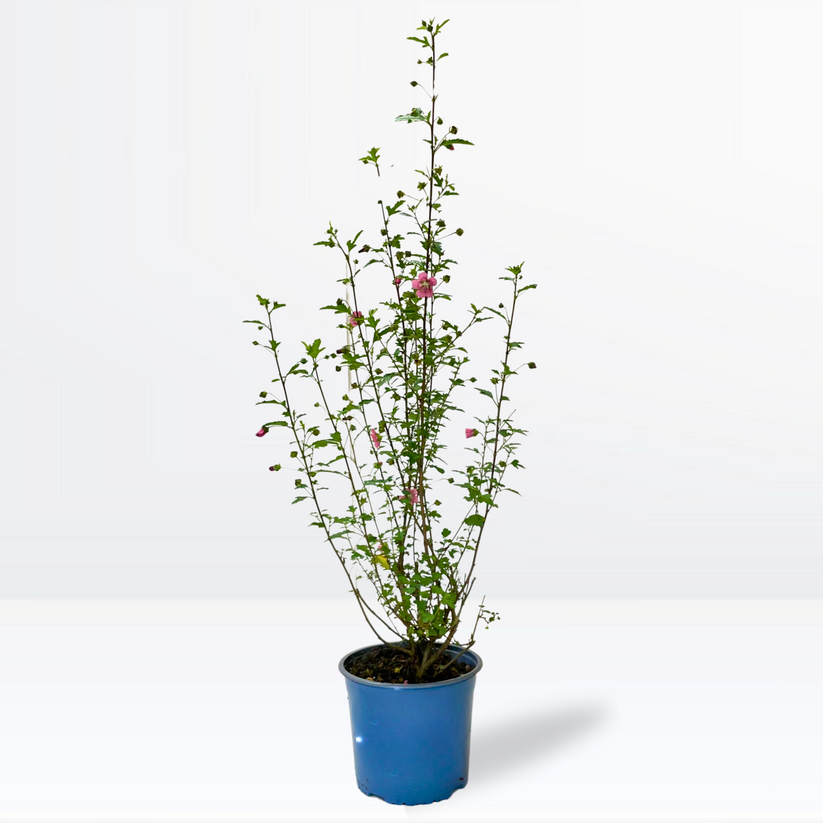





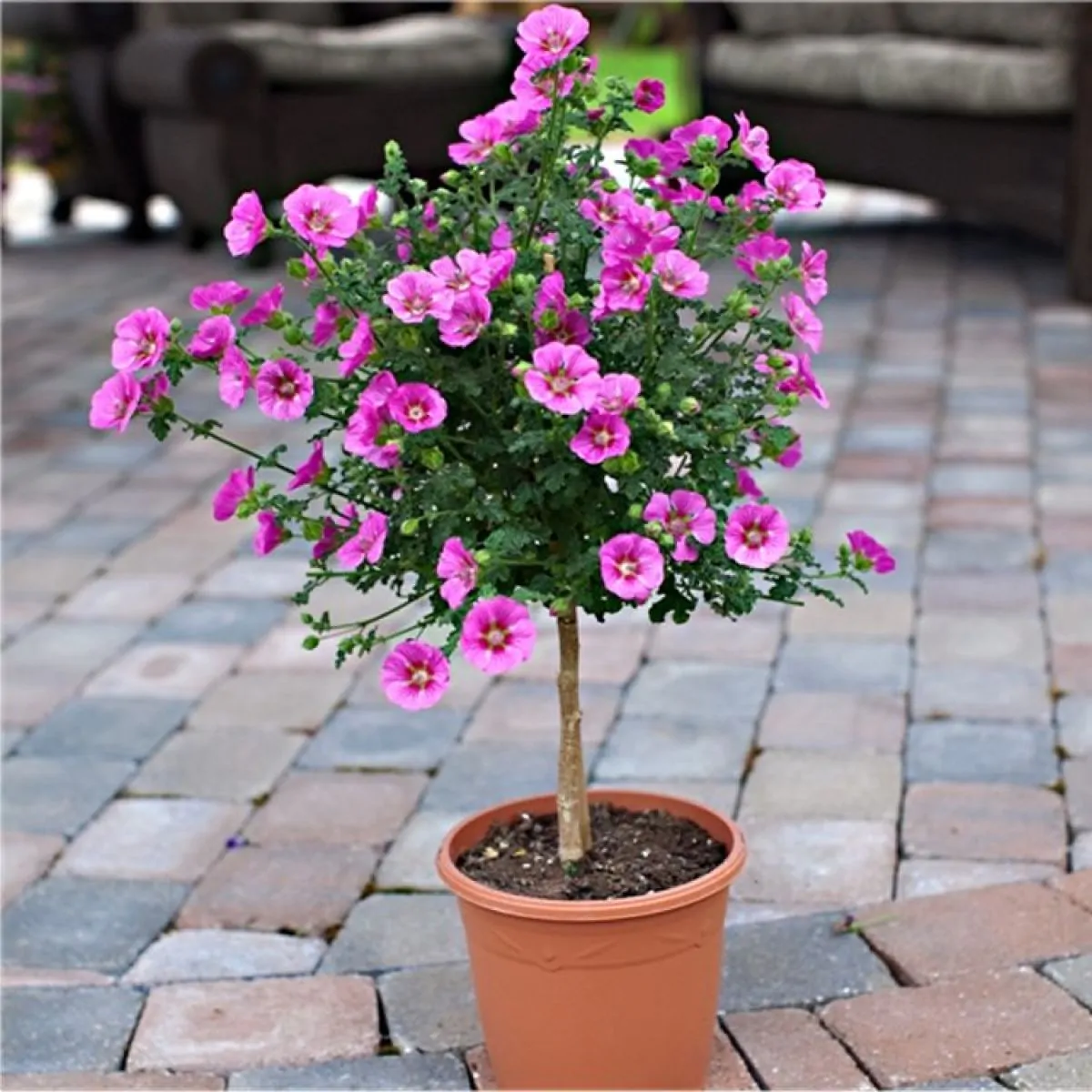








Leave a Reply